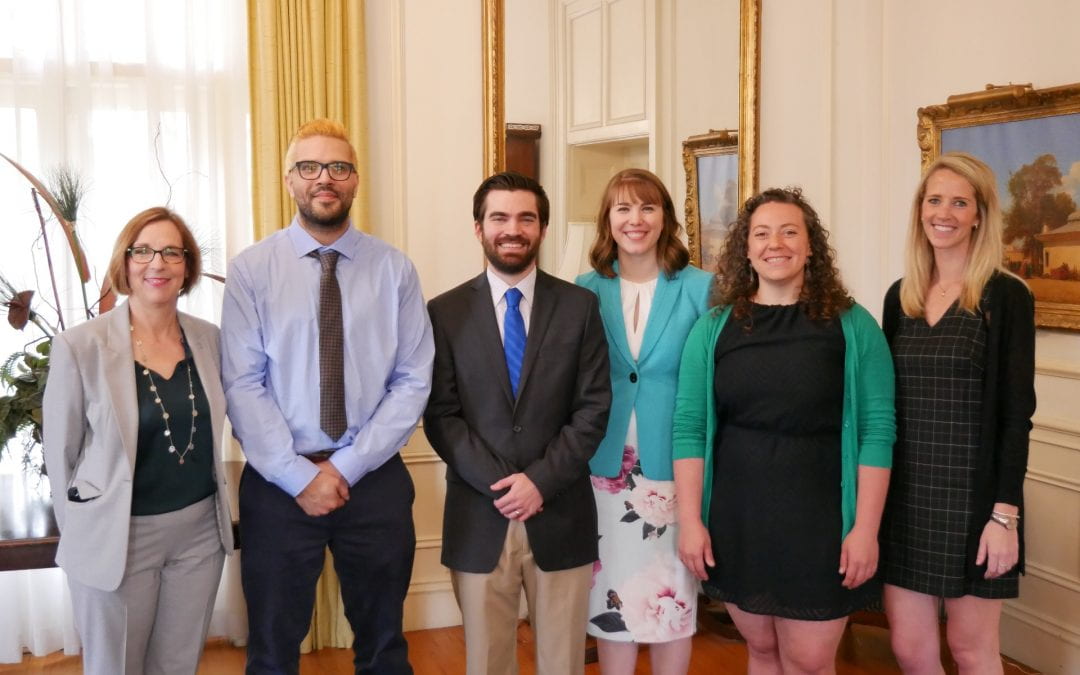Graduate students at Baylor teach dozens of undergraduate courses every semester, from science labs to writing courses. Some graduate students are brand new teachers, walking into classrooms for the first time, while others are comfortable and experienced veterans.
Although  we know that the vast majority of these graduate student instructors came to Baylor because of graduate faculty in their fields, because of Baylor’s unique vision as a Christian research university, and because of their own research interests, we also know that Baylor has a reputation as an excellent teaching university. From the Foundations for Teaching workshop to Seminars for Excellence in Teaching (all run by the ATL-Academy for Teaching and Learning) to teaching fellowships offered by the university libraries to the TeaCHE capstone offered by the graduate school, Baylor prioritizes equipping graduate students to excel in the classroom.
we know that the vast majority of these graduate student instructors came to Baylor because of graduate faculty in their fields, because of Baylor’s unique vision as a Christian research university, and because of their own research interests, we also know that Baylor has a reputation as an excellent teaching university. From the Foundations for Teaching workshop to Seminars for Excellence in Teaching (all run by the ATL-Academy for Teaching and Learning) to teaching fellowships offered by the university libraries to the TeaCHE capstone offered by the graduate school, Baylor prioritizes equipping graduate students to excel in the classroom.
To honor graduate students who do excel in the classroom, the Baylor Graduate School has instituted the Outstanding Graduate Student Instructor Award. This award honors graduate student Teachers of Record who taught either courses or labs at least 3 hours per semester. The award winners were chosen in two ways—from a group of nominees who scored highest on their student evaluations as well as by nomination from their graduate program director. After this first step for nomination, the winners were then selected by a committee of graduate faculty and graduate students based on four additional documents: recommendations from their supervising faculty, letters from students in their classroom, their teaching philosophy statements, and their records of participation in professional teaching development.
On May 1, 2019, we honored our Fall 2018 and Spring 2019 Outstanding Graduate Student Instructor Award recipients: James Davidson (Sociology), Sara Dye (English), Samantha Hodges (BioMedical Studies), Nicholas Colgrove (Philosophy), Tori Hudgins (Mathematics), and Kenneth Vaughan (Sociology). We offered each award recipient a few minutes to talk about their teaching experience at Baylor. After listening to Sara Dye, a sixth-year doctoral candidate in the English department, I knew I wanted to share her teaching story. As Sara has learned so well, teaching is more than conveying information–it is connecting with students in a way that transforms their lives. May her story inspire you as much as it has encouraged me!
Sara Dye’s teaching story:
“Melanie tells me that “old people” stress her out. I ask what she means by old people. “I don’t know, anyone over 60-ish,” she offers. I laugh and ask her to tell me more.
She tells me that she grew up surrounded almost exclusively by her and her parents’ peers. She has had only one living grandparent for the years of her life she can remember, and that grandparent lives in Europe, so she rarely sees her.
She’s never been around “old people,” so she doesn’t understand them. And that lack of understanding leads, as lack of understanding often does, to discomfort.
Melanie is telling me this because I didn’t approve her first project proposal for her ethnography. She’s a brilliant student who is playing it too safe. So, I asked her to brainstorm ideas for the project that would challenge and push her a bit more, further outside of her comfort zone. So, she came back to me with old people.
As the culminating project in an upper-level writing course, the ethnography requires six weeks of participant-observation woven together with focused academic research.
With my enthusiastic support, Melanie finds a local senior adult dancing club that meets weekly and that welcomes her with open arms.
Six weeks later, Melanie tells me how much the project has completely upended her understanding of aging and old age. She’s exchanged phone numbers with one of the women she’s befriended and she has received unsolicited, but welcome, advice on everything from school to dating from two new friends, a 92 year-old woman and her, much younger, 76 year-old boyfriend.
Melanie also tells me that when she was observing the dance group, she often felt like she was back in high school: people clustering in small groups, talking under their breath about the latest hook-ups and break-ups. Melanie’s observations of the dating gossip and lives of the group’s members surprised her and led her into academic research that she navigated with skill.
The result of Melanie’s work was a study of contemporary dating patterns among senior adults, and her ethnography was informative, engaging, and moving.
I tell my students on the first day of every semester that my goals for all of us are that we arrive at the end of the semester more confident and competent writers and communicators and more compassionate humans. I also tell them that, by the end of the course, I want each of them to know that I value and care about them, and that I intend to make that care manifest by both encouraging and challenging them.
And what my years of teaching at Baylor have shown me again and again is that with grace and care and patience and persistence these goals are achievable, for my students and for me.”
Congratulations to all our Graduate Student Instructor Awards!
(The first picture is of our Outstanding Graduate Student Instructors with Provost Nancy Brickhouse; the second is with the graduate program directors and Graduate School Dean Larry Lyon. Sara Dye is second from viewer right in first picture and third from viewer right in second picture.)
